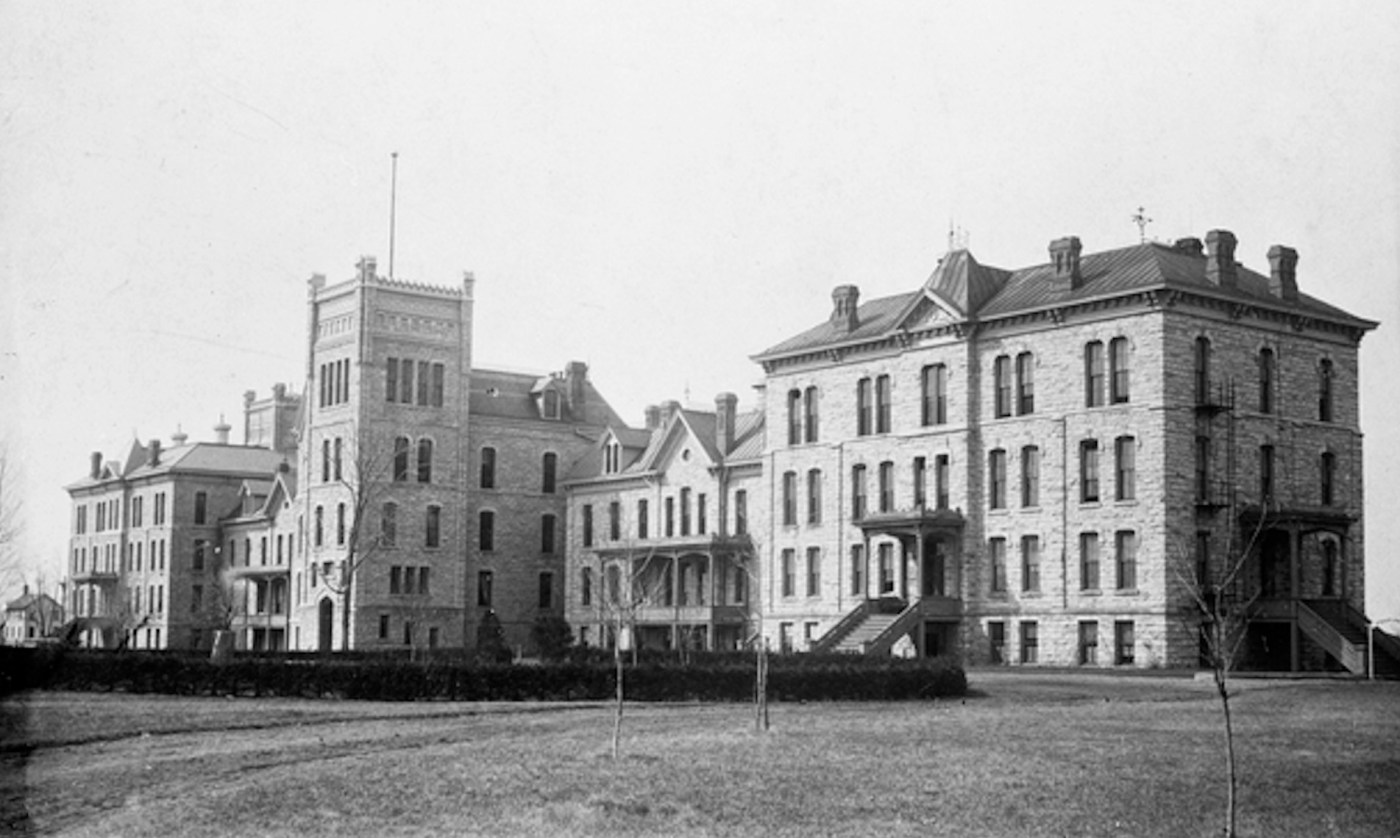
2,350 Minnesotans were sterilized under state’s 1925 eugenics law — most of them women
Rose DeChaine arrived at the Minnesota School for the Feeble-Minded in Faribault in August 1924.
State officials had received testimony that the 22-year-old Brainerd woman was working as a prostitute. They explained the reason she was being institutionalized with a single phrase on her commitment form: “Is immoral.”
Separated from her children, DeChaine would spend the better part of two unhappy years confined to the school before finally being released.
But her freedom came at a cost. DeChaine’s mother had agreed to allow the state to sterilize her daughter under a new law passed by the Minnesota Legislature.
Spurred on by proponents of the pseudoscientific eugenics movement, Minnesota was one of 32 states to enact such a law during the first half of the 20th century, permitting its Board of Control to sterilize “feeble-minded and insane persons” committed to a public institution.
“It was a horribly cruel policy,” said DeChaine’s grandson, John Erickson, a Pulitzer Prize-winning journalist whose book “When Mortals Play God” follows the disastrous ripple effects DeChaine’s commitment and sterilization had on their family.
“There was a lot of bad science happening at that time, and it was used to justify some pretty horrible behavior.”
Unlike eugenics laws in many other states, Minnesota’s required the consent of the patient or their next of kin before a sterilization could be performed. But calling the procedures voluntary is much too generous, said historian Molly Ladd-Taylor, whose book “Fixing the Poor” chronicles the rise and fall of Minnesota’s eugenics law.
“A critic in the 1930s called it the price of freedom,” Ladd-Taylor said. “You would consent to sterilization as a condition of what they called parole — so hardly informed consent as we know it today.”
In practice, Ladd-Taylor found that public officials used the law to curb the birthrate of impoverished Minnesotans who relied on expensive public assistance programs, especially during the lean years of the Great Depression.
During the half-century that the eugenics law remained on the books, Minnesota sterilized at least 2,350 people, according to Ladd-Taylor. Like DeChaine, roughly 80% of them were women. And nearly all of them poor.
‘Human thoroughbreds’
The eugenics movement enjoyed broad public support in the United States at the turn of the last century, including that of many prominent American intellectuals and politicians, such as Theodore Roosevelt, Helen Keller and Alexander Graham Bell.
In Minnesota, the movement’s most outspoken proponent was physician-turned-politician Charles Fremont Dight, who served a term on the Minneapolis City Council before making eugenics his life’s work, according to a 1984 article in Minnesota History magazine.
Obsessed with the idea of perfecting the human race by means of selective breeding, Dight founded the Minnesota Eugenics Society in 1923.
“Just as we have thoroughbred sheep, cattle and hogs, we may have human thoroughbreds if we make use of nature’s laws for securing them,” Dight wrote in a 1922 pamphlet excerpted by the Minneapolis Tribune.
Another leading local voice in favor of eugenics at that time was Frederick Kuhlmann, director of the School for the Feeble-Minded, where the state would perform most of its sterilization surgeries in coming years.
Dight and Kuhlmann were instrumental in shepherding the eugenic sterilization bill through the 1925 legislative session, Ladd-Taylor writes.
“My impression is that there was, if not broad support, not broad opposition either,” she said. “It was seen as a child welfare measure.”
Although the bill was given three public hearings, it appears to have passed with very little fanfare. The House approved it by a vote of 86 to 34 with no debate on the floor.
The Senate did the same a month later by a margin of 40 votes to 4. In an article about the Senate’s work that day, the Pioneer Press reported: “Sixteen bills were passed at the evening session, most of them of minor importance.”
Signed into law by Gov. Theodore Christianson on April 8, 1925, the final bill’s consent requirement was a disappointment to Dight, who believed sterilization should be mandatory for everyone he judged to be inferior. He spent his remaining years campaigning in vain for stricter eugenics legislation.
Saving taxpayer dollars
DeChaine was among the first Minnesotans sterilized under the new law after it took effect on Jan. 1, 1926.
Rose DeChaine, pictured here on her wedding day in May 1930, was one of the first Minnesotans to be sterilized under the state’s 1925 eugenics law. (Courtesy of John Erickson)
She was typical of many women sent to the School for the Feeble-Minded at that time.
“She was uneducated, she was raised in a pretty poor household, and she got in a lot of trouble,” said Erickson, who researched his grandmother’s case off-and-on for nearly two decades before writing his book.
Already the mother of two children she was struggling to support, DeChaine was pregnant with a third and living with her mother when she was sent to Faribault.
Rural Minnesota was suffering from a slumping agricultural economy in the 1920s, and the Great Depression would soon spread the pain to the rest of the state. Public assistance was administered by county officials who were often eager to offload anyone they viewed as a burden to local taxpayers.
“Judges — particularly in these small communities — would commit them because that would get the problem out of the community,” Erickson said.
After being committed, they were the responsibility of Mildred Thomson, director of the state Board of Control’s Bureau for the Feebleminded and Epileptic, who would consult with their families and the staff at the school in Faribault to determine whether they were an appropriate candidate for release — and sterilization.
Thomson, like many of her colleagues, viewed herself as an advocate for the people under her care.
Ladd-Taylor writes that “the officials who administered Minnesota’s sterilization law saw it as a child welfare measure that would ‘protect’ the dependent, delinquent, and disabled poor from the burdens of childrearing — and facilitate their transition from welfare to work.”
The need for low-wage domestic labor was one of the primary reasons more women were sterilized and paroled than men, Ladd-Taylor said. Furthermore, families were more likely to consent to the sterilization of women, and “the community didn’t want so-called ‘feeble-minded’ men being released.”
Although the state did not record the ethnicity of those who were sterilized under the law, it’s likely Native Americans were disproportionately affected, Ladd-Taylor said.
Sterilizations under Minnesota’s eugenics law peaked in 1937, as the Depression pushed more of the state’s residents onto public assistance rolls. They began to ebb as World War II caused a shortage of surgical nurses, who were necessary to perform the operations.
Only after the war did “the combined effects of social welfare entitlements, a prosperous economy, and public revulsion over Nazi crimes end routine sterilizations in Minnesota’s public institutions,” Ladd-Taylor writes.
The Minnesota Legislature officially put a stop to the practice in 1975, when it passed a law creating new protections for people with intellectual disabilities.
Related Articles
One of the FBI’s original 10 Most Wanted Fugitives was caught in St. Paul — by a bunch of kids
Sign up for From the Archives, our weekly St. Paul history newsletter
How the COVID-19 pandemic shut down Minnesota in three weeks
Photo gallery: Throwback Thursday
Museum offers new home to gun St. Paulites used to fire first American shots of WWII


